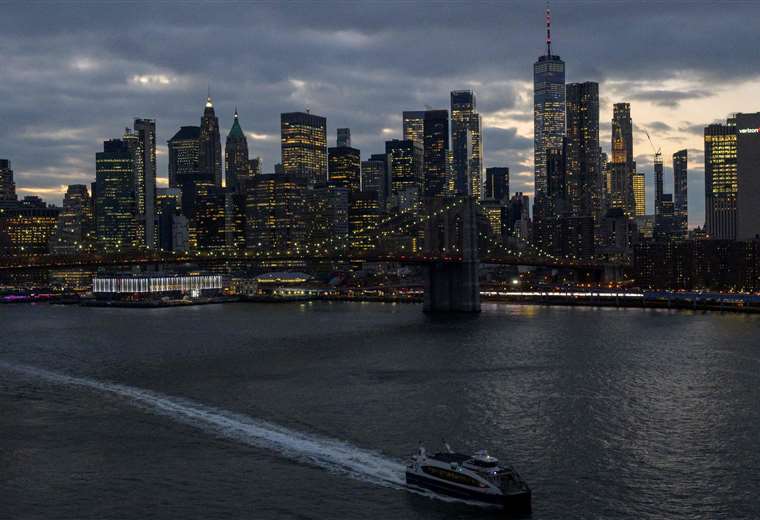May 31, 2023, 3:45 PM
May 31, 2023, 3:45 PM
NY, Recognized worldwide as the city that never sleeps, now it has another reason to keep its inhabitants awake at night: the America’s most famous metropolis is sinking.
One study found that the “Big Apple”, in the American East, it is gradually sinking, partly under the weight of the skyscrapers that made the so-called ‘concrete jungle’ famous.
The descent makes the metropolis -of about 9 million inhabitants- be more vulnerable to sea level rise and coastal flooding caused by climate change, the researchers said.
The study, published this month in the journal Earth’s Futureset out to estimate how the vast infrastructure of the city impacts its collapse.
This phenomenon, which causes huge portions of land to yield, is caused by processes such as erosion or human activities such as mineral extraction.
Geologists calculated that the more than one million buildings in New York added a total mass of 762 trillion kilograms of downward pressure to the ground.
The CNN network maintained that it was the equivalent of about 1.9 million Boeing 747 aircraft with a full load of fuel.
The report concluded that the financial capital of the United States is sinking at the rate of two millimeters on average per year.
Some areas built on softer rock or artificial fill have subsided by up to 4.5 millimeters per year, the study added.
However, building fewer skyscrapers will not solve the problem, Tom Parsons, the author who led the research, told AFP.
“The main cause of New York sinking and along most of the East Coast, it is tectonic and cannot be stopped,” said the geophysicist with the United States Geological Survey (USGS).
Subsidence will exacerbate the impact of sea level rise caused by warmer temperatures and the melting of the world’s ice sheets.
The Sea Level Rise organization says water levels around New York are nearly 9 inches (23 centimeters) higher than they were in 1950.
The city government predicts that the surrounding waters will rise between eight and 30 inches (76.2 cm) by 2050.
The state is spending billions of dollars building levees, raising roads, and improving drainage to mitigate hazards.
However, lower-lying areas are already feeling the devastating effect of flooding from increasingly intense storms.
In 2012, Hurricane Sandy killed more than 40 New Yorkers, destroyed some 300 homes and left tens of thousands of people without power.
Hurricane Ida, which hit the city in 2021, left dozens dead in New York, many of them from being unable to escape basement flooding.
Parsons said it was impossible to say when certain places in New York will be under water, but assured that this will happen.
“It is very difficult to predict even an approximate time because while the subsidence of the city is relatively stable, forecasts of sea level rise are uncertain and depend on future rates of greenhouse gas emissions,” he explained.
New York is not the only major city in the world that is going under. In a similar situation is Venice, in Italy, where fears have skyrocketed that one day it will be completely submerged.
Meanwhile, Jakarta, the Indonesian capital, is sinking at such an alarming rate from excessive groundwater extraction that the country is relocating the city.

















